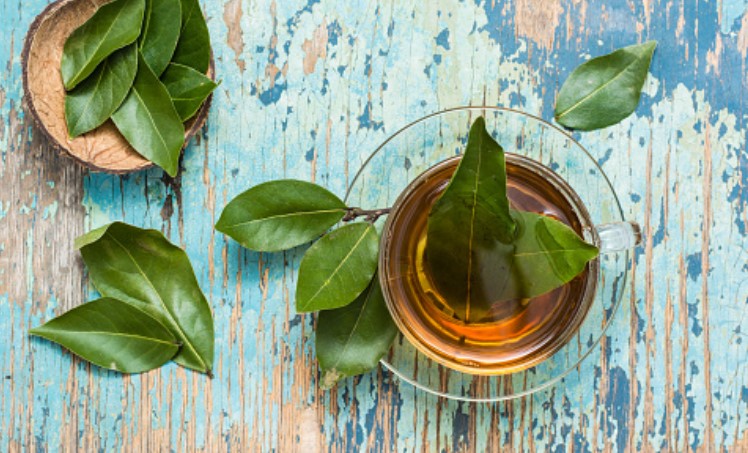Most people know bay leaves from their function as a victory wreath from ancient times. Today, they’re a popular spice in Mediterranean cuisine. But that’s not all the leaves can do: A healing tea can also be made from bay leaves.
Laurel is an evergreen shrub or tree that grows mainly in the Near East, Europe, and North America. The laurel plant is available in houseplant size but can also reach a height of up to 20 meters and blooms in April and May. The dried leaves of the laurel can be made into a delicious laurel tea with many health benefits.
What ailments are laurel tea said to help with?
Due to its anti-inflammatory properties, laurel tea is recommended for drinking and inhalation by laurel lovers, especially for colds and inflammations of the throat. In addition, it is said to have a soothing effect on tension, joint pain, and digestive problems, as well as helping to relax and increase concentration. In addition, laurel tea is said to be beneficial in diabetes prevention and treatment due to its blood sugar-regulating effect and even helps in weight loss.
What are the active ingredients in the tea?
The bay tree leaves have many healthy, active ingredients that benefit the body. The essential oils contained in the leaves stimulate the body and mind and can help with respiratory diseases. In addition, laurel has a high content of tannins, which have anti-inflammatory effects and are beneficial for inflammation of the gastrointestinal tract, mouth, and throat. In addition, laurel tea contains bitter compounds that aid in fat digestion and flavonoids, antioxidants, and phytochemicals that have been shown to reduce cancer risk.
Is the effect of bay tea scientifically proven?
Studies on the effects of bay leaf and bay leaf tea are primarily based on animal or in vitro studies, i.e., experiments in a test tube or Petri dish. Unfortunately, studies on humans have only been carried out in isolated cases, which is why the research situation – as of today – is not yet sufficient to speak with certainty of a health-promoting effect.
Nevertheless, the isolated studies indicate a potentially healing effect of laurel tea. For example, researchers at the University of Agriculture in Pakistan concluded that daily intake of one to three grams of laurel in capsule form over 30 days could help lower and control blood sugar and cholesterol levels in people with diabetes. The finding thus suggests that laurel tea may be beneficial in controlling and preventing diabetes and cardiovascular disease.
Are there any possible risks and side effects when consuming it?
The vast majority of people consider the consumption of bay leaf tea safe and well-tolerated. However, as always, you must pay attention to your condition and see to what extent the tea agrees with you. Since there is not enough information to what extent the laurel tea is safe during pregnancy, breastfeeding, with pre-existing conditions, and especially diabetes, in that case, you should talk to a doctor and ask about possible side effects.
Where to get laurel tea and how to prepare it?
If you want to prepare laurel tea yourself, you need a bay tree – for the aroma – at least two years old, whose leaves only need to be harvested and then dried for two to three weeks in a dark place. For a cup of tea of 250 milliliters, you need to pour boiling water over two dried bay leaves and then infuse for about ten minutes.
For an even more intense aroma, you can also boil the tea in water in a pot for five minutes and then let the brew stand for three to four hours before warming the tea again and consuming it. If this is too much work for you, you can also find ready-made tea in numerous online stores.
How does laurel tea taste?
The taste of laurel tea is tart and spicy. It tastes of herbs and has a slightly bitter note and an intense smell. Honey complements bay tea taste very well and adds some sweetness to the tart aroma.
Sources
1 Batool, S., Khera, R. A., Hanif, M. A. et al. (2020). Bay Leaf. Medicinal Plants of South Asia.
2 Yao, H., Xu, W., Shi, X. et al. (2011). Dietary flavonoids as cancer prevention agents. Journal of Environmental Science and Health, Part C.
- Khan, A., Zaman, G., Anderson, R. (2009). Bay Leaves Improve Glucose and Lipid Profile of People with Type 2 Diabetes. Journal of Clinical Biochemistry and Nutrition.
- fitbook.de
- picture: pixabay.com
This post has already been read 1086 times!



